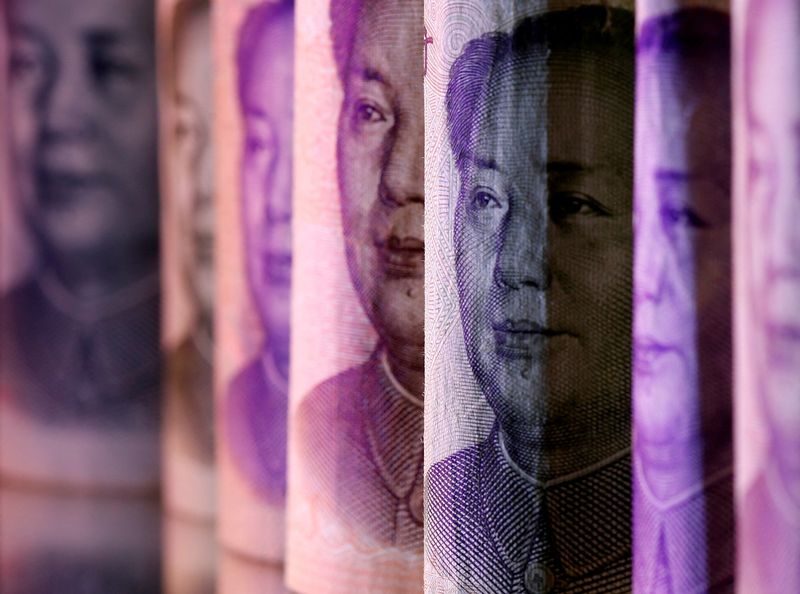(Reuters) - China unveiled a 10 trillion yuan ($1.4 trillion) debt package on Friday to ease local government financing strains and stabilise flagging economic growth, but officials refrained from announcing direct economic stimulus.
Below are the key details of the plan:
THE MEASURES
Authorities increased the amount of debt local governments are allowed to raise through special bonds by 6 trillion yuan ($836 billion) over the next three years.
This raises their special bond quota to 35.52 trillion yuan, and their overall debt ceiling to 52.79 trillion. China's local government debt under official quotas was at 40.74 trillion yuan at the end of 2023, finance ministry data show.
The new funds will help repay debt accumulated through local government financing vehicles (LGFVs), which Beijing refers to as "hidden debt", given that local administrations used them to circumvent the official debt limits.
Additionally, local governments will be allowed to use 800 billion yuan per year for the next five years in debt issuance already approved by Beijing, also for paying back the loans, bonds and shadow credits of LGFVs.
Beijing said local officials responsible for reckless borrowing would be investigated and held accountable and that China will speed up LGFV reforms to better control debt.
THEIR IMPACT
Local governments, facing high debt and falling revenues, have been cutting civil servants' pay and delaying payments to contractors, choking money flows to the real economy and fanning deflationary pressures.
Their strains, stemming from a severe property crisis since 2021 that decimated revenues from residential land auctions to developers - a key source of funds for cities and provinces - had put China's 2024 growth target of roughly 5% at risk.
Officials estimate swapping hidden for official debt will save 600 billion yuan in interest for local governments over five years. Having money available for principal repayment also eases cost-cutting pressures on these administrations.
The finance ministry estimates "hidden debt" was at 14.3 trillion yuan at the end of 2023. Authorities plan to trim that to 2.3 trillion yuan by 2028, with officials saying about 2 trillion yuan in past debts accumulated for shanty town renovation programmes will also be repaid by 2029.
The International Monetary Fund, however, estimates LGFV debt amounted to 60 trillion yuan at the end of 2023, or 47.6% of gross domestic product.
WHAT ABOUT REAL STIMULUS?
While the debt swap programme unclogs money pipes to the real economy, it marks a departure from the fiscal packages China unleashed during past episodes of economic slowdown or market turmoil, when vast sums were spent on urbanisation and infrastructure.
In part, that's because those past stimulus programmes are what caused debt to spike in the first place.
Still, Finance Minister Lan Foan said on Friday more support is coming.
Authorities plan measures to reduce a giant inventory of unsold homes and repurchase idle land from developers; to recapitalise big state banks; and to expand subsidy schemes to factories for upgrading equipment and to consumers for replacing old appliances and other goods.
Lan gave no details on the size and timing of these measures.
WHAT'S NEXT?
Key meetings this year may provide more hints.
The Communist Party's top decision making body, the politburo, convenes again at the end of the month. Leaders are also holding the annual Central Economic Work Conference in December to discuss growth targets and policies for next year.
Growth headwinds are about to intensify as Donald Trump returns to the White House in January. Trump threatened tariffs in excess of 60% on U.S. imports of Chinese goods, rattling China's industrial complex.

Analysts say Beijing may be saving fiscal ammunition for the next round of its trade war with Washington.
($1 = 7.1785 yuan)